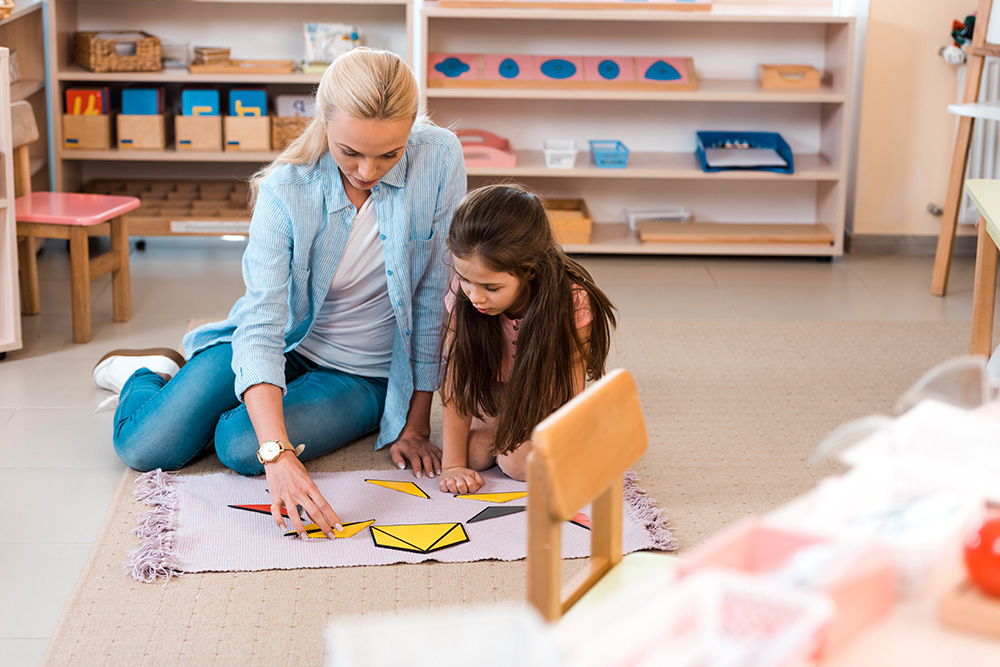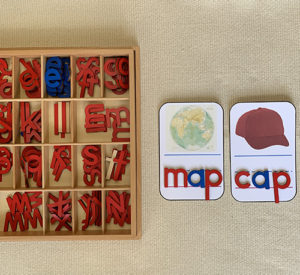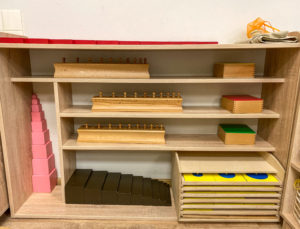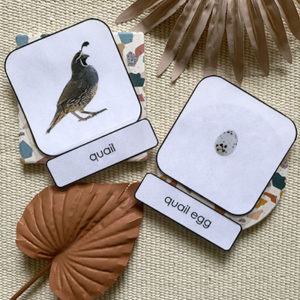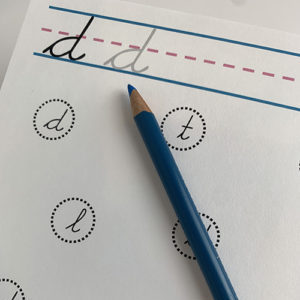What is the Montessori Method?
There are two important things to note about the Montessori Method:
- Maria Montessori was not interested in creating a method,
“It is not true,” says Dr. Montessori, “that I invented what is called the Montessori Method. I have studied the child, I have taken what the child has given me and expressed it, and that is what is called the Montessori Method.”
- The term Montessori is not protected or trademarked. Anyone can call anything Montessori. As a result, there are schools that don’t stick to high standards and products that use the name just to make sales. This is damaging to the Montessori reputation.
One, The Prepared Environment
The Montessori classroom is referred to as the prepared environment. Every Montessori classroom contains a similar set-up and materials. There are also items you won’t find in a Montessori classroom.
For example, there is no teacher’s desk or adult-sized furniture. There are no bulletin boards, TVs, or Smart boards. Montessori teachers sit on small chairs or on the floor just like the children do. The adults conform to the environment that has been designed especially for the children.
The Classroom Design
All Montessori classroom materials are child-sized. They fit the child’s body, hands, and abilities. The materials are made of natural materials, and the children are taught the room and everything in it are for them. The children learn to take good care of everything. The shelves are low and open, lined with neatly arranged activities on trays. There is only one of each activity. The children must learn to share, wait, and plan their work. There are no worksheets.
The classrooms have a quiet energy to them. Montessori teachers do not call out across the room or lecture loudly. The teacher speaks quietly to a child when giving a lesson, and will often even whisper information which is a very effective way to get a child’s attention! This creates a very peaceful environment conducive to focus and concentration.
The Intention
The children know the classroom is special and treat it with care. Every item is chosen to be beautiful as well as logical to use by a child. Once the children are in the classroom, everything runs smoothly, learning happens almost automatically, and the teachers are free to support and guide every child individually. It’s magical!
Two, Follow the child
The phrase “follow the child” is used to describe the overarching philosophy of the Montessori method. Children are not allowed to have free reign and do whatever they want. They do have the freedom to choose from among the many engaging materials available to them. However, they are also guided, encouraged, and motivated to try new things by their teachers.
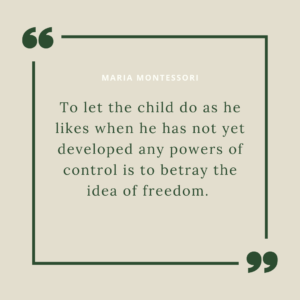
The teacher training courses spend a lot of time talking about how to engage with children in learning new material. Teachers also learn how to implement positive and gentle discipline in the classroom. They will also not allow anything to occur in the classroom that is dangerous, destructive, or overly distracting. The children are aware of these rules and understand when limits are placed.
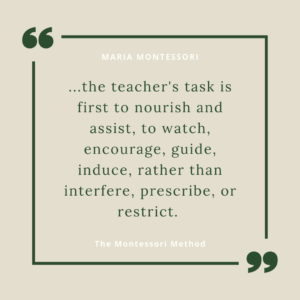
So what does it look like to follow the child using the Montessori Method?
Following the child means studying the child and learning from them. Every child in the classroom is observed by the teachers. We write notes, and keep track of what they have learned and what they might be interested in. Teachers look for areas where children need more support and practice. Children can practice to take as long as it needs to before they move on. We also modify our approach for every child.
Every school year is also different. Different classes have different interests. One year we may have a ton of children who love outer space, another year, gardening, etc. There is so much flexibility to augment the classroom and curriculum to address the unique needs and interests of all children, and teachers are trained to observe and plan for these needs and interests.
Three, The Prepared Adult
Montessori teacher training is unlike other teacher education programs. Our training puts a lot of emphasis on observing as opposed to lecturing, not interfering a child as opposed to trying to get a child to do something, modeling behavior as opposed to talking about it. The list goes on. Montessori recognized that often the greatest obstacle to a child learning is the adult interference in their lives.
Montessori teachers are required to spend time observing the classroom, observing individual students, observing patterns of work, and more. This information helps the teachers plan for changes in the classroom or their own approach. The teachers must reflect on their own performance and interactions with students – where they have helped or hindered any particular child’s learning and growth. It is very serious work.

